Let your mind’s eye sweep over the rich expanse of the avian family tree. Revel in its deep, gnarly divisions, its long, slender shoots. You’ll come to a profusion of branches and twigs — the songbirds, or passerines — and if you look closer still, a colorful cloud of myriad forms, the nine-primaried cardinals, tanagers, finches, blackbirds, sparrows, and, blazing in their full resplendent glory, the wood-warblers.
So dense is this part of the tree, so close and tangled the relationships, that scientists struggle still to delineate families, genera, and species, but growing evidence places the wood-warblers (Parulidae) closest to the blackbirds and relatives (Icteridae) and the sparrows and relatives (Emberizidae).
Relationships among these three groups are not yet clear, nor are the relationships of several odd species, including the Yellow-breasted Chat, which though traditionally considered a wood-warbler might belong in the Icteridae or somewhere else nearby.
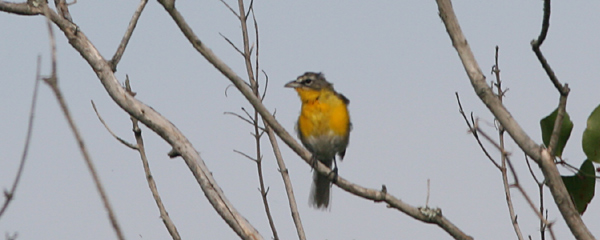
Yellow-breasted Chat: Identity still in limbo. © Mike Bergin
The core wood-warblers are a fairly comfortable, intuitive group, but recent genetic studies and reinterpretations of voice, plumage, and biogeographical patterns have shaken up our understanding of how the wood-warblers are related to each other. The AOU made a few changes in 2010, and if a pending proposal is accepted in 2011, the family will get a rather dramatic overhaul. Familiar warbler genera will disappear. Dendroica: Gone! Wilsonia: Gone! Oporornis: Gone! Parula: Gone! Others will change composition significantly.
Let’s take a look at what the future might hold. In order to make this less scary, I’ve attempted to devise seven memorable group names to help you mentally organize the 14 proposed genera and hundred-plus species with ease: The Ovenbird, The Worm-eater, The Other Oddballs, The (Mostly) Gray Jobbies, The Sneaky Yellow Dudes, The Rot-your-retinalicious Eye Candy, and The Southern Tribes.
The Ovenbird
The Ovenbird, a spotted warbler that walks on the ground, isn’t closely related to waterthrushes as was once thought. In fact, it appears to be a basal member of the wood-warbler clade — an early offshoot of the group — and is now the only member of the genus Seiurus.
The Worm-eater
The Worm-eating Warbler is next, another early offshoot and (still) the only member of the genus Helmitheros. On its wintering grounds, this species specializes in foraging at dead, curled leaves.
The Other Oddballs
Waterthrushes (now in the genus Parkesia); Swainson’s, Prothonotary, and Black-and-white Warblers; and a greatly reduced Vermivora (now containing only the Blue-winged, Golden-winged, and presumed-extinct Bachman’s Warblers) form a group of rather dissimilar small genera.
Northern Waterthrush, Parkesia noveboracensis © David J. Ringer
The (Mostly) Gray Jobbies
The bulk of what once was Vermivora (with Blue-winged, Golden-winged, and Bachman’s removed) — a fairly drab set of warblers including Lucy’s and Tennessee — cluster with the Mexican and Central American Crescent-chested and Flame-throated Warblers, both of which were formerly included in Parula. The grouping seems a bit counterintuitive, and one of two approaches can be taken: lumping them all into genus Oreothlypis (the approach taken in the AOU proposal) or putting the two colorful, sedentary tropical species and the duller, migratory species in two separate genera.
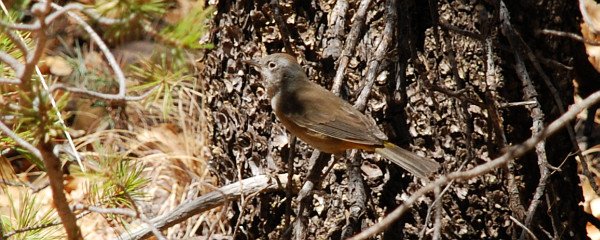
Colima Warbler, Oreothlypis crissalis © David J. Ringer
The Sneaky Yellow Dudes
Next are the yellowthroats. It turns out that warblers once placed in the genus Oporornis (Kentucky, Mourning, MacGillivray’s, and Connecticut) are in fact scattered among the yellowthroats, and the AOU proposal recommends merging everything into genus Geothlypis. I can dig it. They’re broadly similar in habits (low skulkers) and song type (Carolina Wren-like).
The Rot-your-retinalicious Eye Candy
Ah, here are the electric Cerulean, the fiery Blackburnian, the harlequin Audubon’s and Chestnut-sided Warblers, the fantastical, brilliant, sought-after core of the wood-warbler assemblage. This group largely corresponds to the old genus Dendroica, but the American Redstart, two parulas, Hooded Warbler, and odd-looking Caribbean Whistling Warbler all belong here too. Setophaga (the redstart) is the oldest genus name, so the other generic names are likely to disappear, which will mean that the family Parulidae is left without a corresponding genus Parula, a situation which, by the way, is acceptable according to the International Code of Zoological Nomenclature. If you didn’t know there was such a thing, then don’t worry your pretty little head — just go back to looking at these gorgeous warblers.
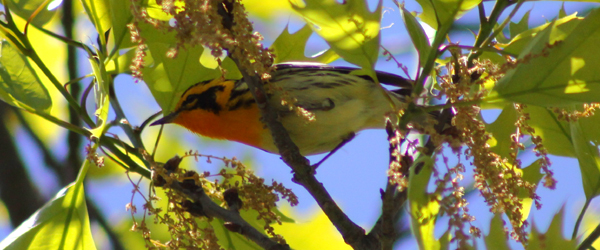
Blackburnian Warbler, Setophaga (Dendroica) fusca © Corey Finger
The Southern Tribes
This last group contains mostly species that occur from Mexico south through Central America and into South America. Some, like Painted Redstart, barely reach the U.S. Others, like the Pink-headed Warbler and Rufous-capped Warbler are the stuff of Neotropical dreams. The two surprising exceptions here are the strongly migratory Wilson’s Warbler and Canada Warbler, both of which breed in northern North America.
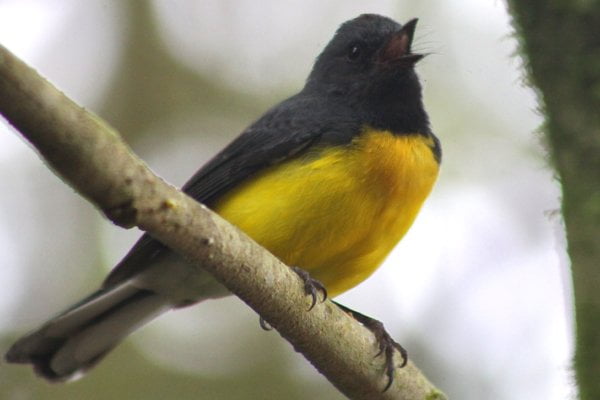
Slate-throated Redstart (or Whitestart), Myioborus miniatus © Corey Finger
To learn more about revisions to wood-warbler taxonomy, check out the pending AOU proposal (PDF), the paper on which it’s based (A comprehensive multilocus phylogeny for the wood-warblers and a revised classification of the Parulidae (Aves)), Birding‘s interview with the study’s lead author (PDF), John Boyd’s Parulidae, and Nick Sly’s New Wood-Warbler Taxonomy post.
————————————————————————————————————————————————
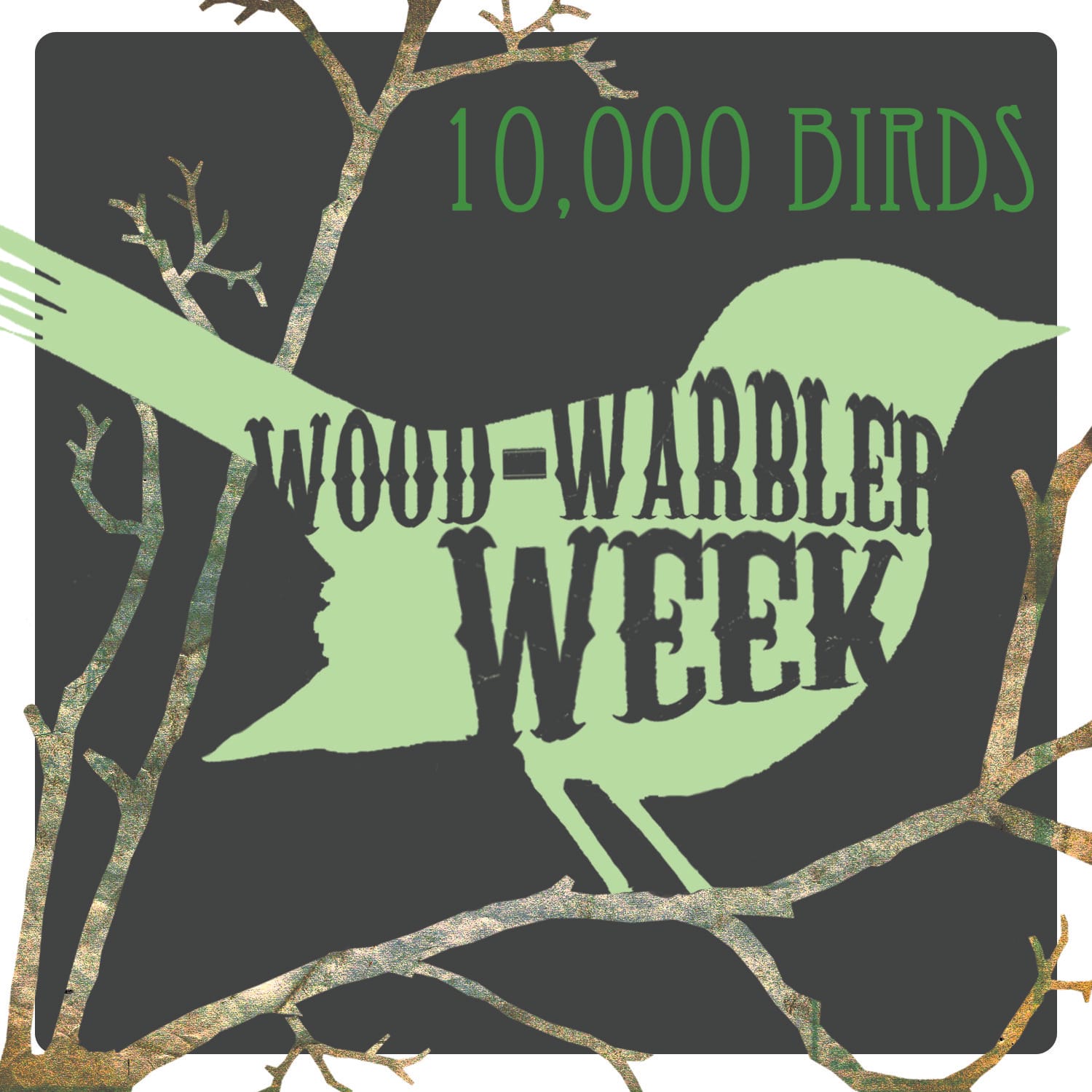 This week, 8 May – 14 May 2011, is Wood-Warbler Week on 10,000 Birds! Though wood-warblers, the mostly brightly colored birds of the family Parulidae, are only found in the New World we felt that birders the world over would be pleased to see a plethora of posts about these striking and sought after species. We are devoting a whole week to wood-warblers but are only just barely scratching the surface of possible topics involving this amazing family of birds.
This week, 8 May – 14 May 2011, is Wood-Warbler Week on 10,000 Birds! Though wood-warblers, the mostly brightly colored birds of the family Parulidae, are only found in the New World we felt that birders the world over would be pleased to see a plethora of posts about these striking and sought after species. We are devoting a whole week to wood-warblers but are only just barely scratching the surface of possible topics involving this amazing family of birds.
Right now great flocks of wood-warblers are making their way north from the southern United States, Mexico, the Caribbean, Central and South America to breed across the United States and Canada. Many other non-migratory wood-warbler species are living their lives across the neotropics, doing their best to survive and pass on their genes. Wood-Warbler Week is a celebration of all wood-warblers and we hope you join us in celebrating these absolutely wonderful birds. Read about them here but also get out and experience them. You won’t regret it!
————————————————————————————————————————————————














It might all make sense and I view it as a good thing, but I’ll miss “Oporornis”. Seriously miss it. If ever I get to see a Connecticut again, it just won’t be the same because now it is in the same group as the easily observed Common Yellowthroat.
Thanks for this very well-written overview.
So I might never see a Dendroica again? That is sad.
Great post!
I’m curious about the picture of the “redstart”. I’ve seen lots of slate-throated redstarts here in Mexico but they have all been red-bellied with slate color on head and back. Howell and Webb says that there is a group called Connectens that is orange-red on underparts. They also list similar species as being painted redstart which is also red. So is this an error or are there some that are yellow-bellied?
Wait! I just checked my Panama book and they show a yellow and black bird like your picture. Other folks may find the same confusion.
@Jochen – John Boyd points out that given Connecticut’s distinctiveness and its position in the clade, it could be retained in Oporornis. That’s not the proposal the AOU is considering, but it does make sense.
@Corey – Get ’em while you can! As if you needed another excuse to bird….
@Chivis – Yep, Slate-throated Whitestarts have redder underparts “up north” in their range and yellower down south.
Outstanding analysis, David. I love taxonomic revisions as much as the next amateur field ornithologist, but I’m sure I’m not alone in disliking some of these proposals. Obliterating very distinctive genus names cuts at the emotional heart of out interest.